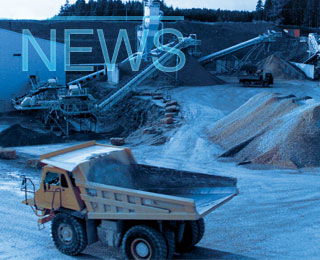A development spending update released yesterday by CRH shows that growth through vertical integration continued to be a key strategy for the Irish building materials major through 2012. But with spending still subdued compared to 2006 peaks levels, will 2013 see the company step up its acquisition activity and which markets offer the potential for takeover opportunities?
In its twice-yearly development statement, CRH said it closed 2012 with acquisitions and investments reaching almost EUR630m. Following a first-half development spend of EUR255m from 18 deals, 2H12 spending totalled EUR375m from a further 18 investments. North America accounted for the majority of deals in the last six months, with 12 acquisitions worth EUR256m. Investments included the purchase of a majority stake in an integrated aggregates and asphalt business in New Jersey as well as five other bolt-on transactions, adding around 515Mta of aggregates reserves. Meanwhile CRH's European division carried out six transactions at a total of EUR119m. These included the purchase of Cemex's assets on the Isle of Man which is the sole producer of sand and gravel, the market leader in ready-mixed concrete on the island and also operates a joint-venture importing bulk cement.??"The materials transactions bring strong asset-backed resource positions and, when combined with existing operations, provide significant opportunities for vertical integration," commented CRH chief executive Myles Lee.
Pace of deals to accelerate? ?While the Dublin, Ireland-based company has long pursued an active acquisition programme with a broad spectrum of building materials under its wing, analysts at Bernstein Research highlight that the EUR375m in the second-half of the year was down eight per cent on 2H11 and the total spend on acquisitions for the year are a far cry from the 2006 peak spend of EUR2.2bn. However, Bernstein underlines that acquisitions have been the largest contributor to CRH's earnings development, representing over 100 per cent of the company's growth, unique amongst heavy building materials names under its coverage. Going forward, it states that while CRH's latest update gives no clear evidence that acquisition spending levels are increasing, the deal flow is expected to recover from its current depressed level over 2012-16. For 2013 it anticipates a development spend of around EUR800m, generating two per cent of sales growth for the year, with further increases in spending over the four-year period.
Targeting long-term growth areas?Overall spending in 2012 remained broadly similar to 2011 (total development spend of EUR610m on 45 acquisitions and investments) and such activity illustrates CRH's long-term approach to develop a balanced portfolio. While it has recently set itself an ambitious programme to make savings of EUR300m between 2013-15, the company said it may boost spending capacity to between EUR1bn and EUR1.5bn if opportunities with "good value" emerge.
Recent speculation on CRH's next potential buy includes the French business of UK building supplies group Wolseley. Last summer, Wolseley said it was looking at possibly offloading the unit, which has suffered from the eurozone crisis and in December CRH was identified as a potential buyer.
The latest buzz has now returned to the Indian market where CRH is reported to be among the frontrunners for a controlling stake in Sree Jayajothi Cements (SJJCL). Part of the Shriram Group, SJJCL operates a 3.2Mta cement plant in the southeastern state of Andhra Pradesh where CRH already has a strong presence with a cement capacity 4.2Mta. The SJJCL assets would fit well with CRH's main strategy of acquiring small and mid-sized companies but talks are still said to be in a preliminary stage, with Holcim also rumoured to be in the race. India certainly seems to be a market in which CRH is looking to increase its presence although its approach appears to be a patient one. Last year talks with Jaiprakash Associates for the purchase of its cement business in Gujarat were terminated with CRH citing "valuation differences". Nevertheless, the company has said it sees India and China as medium- to long-term growth areas stating that it is keen to identify "entry platforms that have well-located quality operations and good regional market positions and which have the potential to develop further downstream into integrated building materials businesses".

Lacklustre start to the year for Italian cement
Italian cement demand started 2025 with an eight per cent YoY contraction in January, according ...